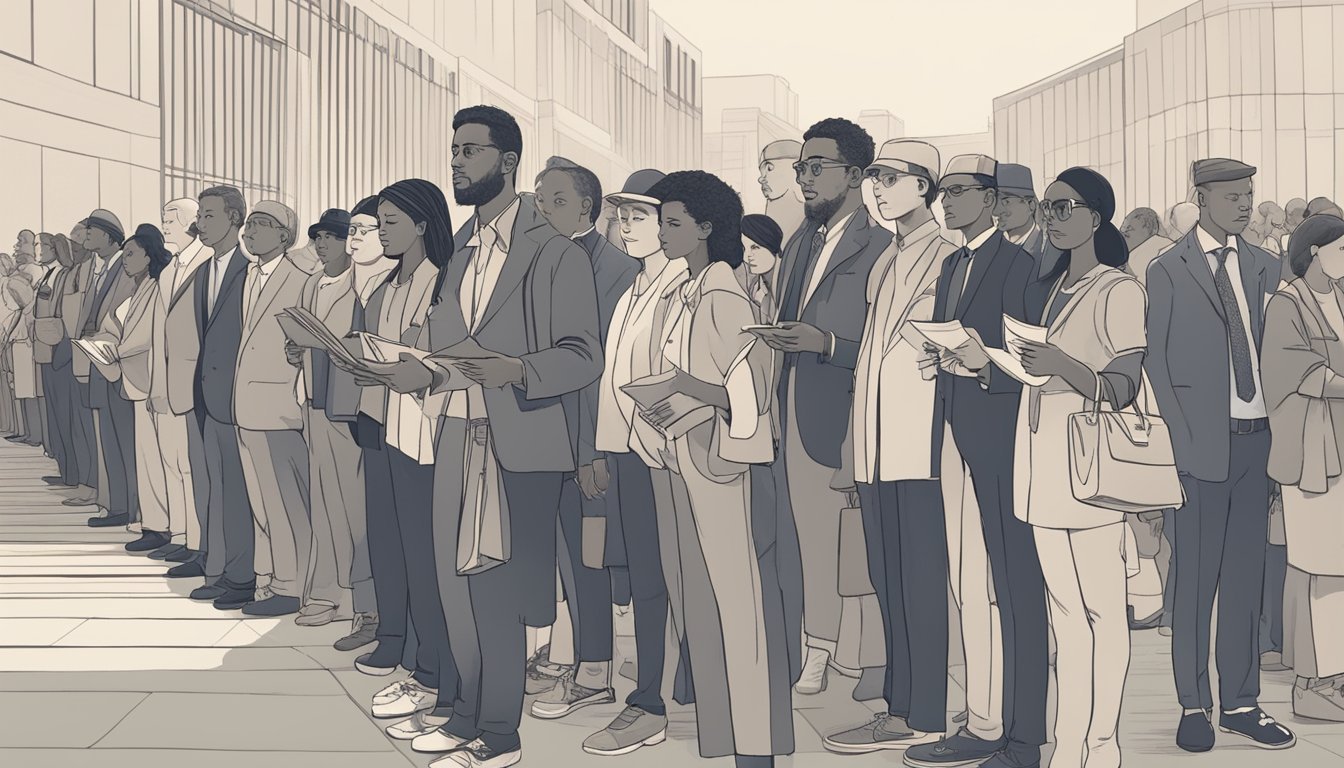90 Day Fiancé TLC: Shocking Secrets and Drama That Will Leave You Speechless!
90 Day Fiancé is a popular reality show on TLC that has captivated audiences since its debut in 2014. The series follows international couples as they navigate the complexities of the K-1 visa process, which allows foreign fiancés to enter the United States with the requirement to marry within 90 days. Each season documents the journeys of several couples as they face cultural differences, family conflicts, and the pressure of deciding whether to tie the knot or part ways within the three-month timeframe.
The show's premise taps into the universal themes of love, commitment, and cultural exchange, creating a compelling blend of romance and drama. TLC's 90 Day Fiancé has resonated with viewers, spawning numerous spin-offs and becoming a cornerstone of the network's programming. Its success lies in its ability to showcase real-life stories that are both relatable and extraordinary, offering a glimpse into the challenges and triumphs of cross-border relationships.
Concept and Format
90 Day Fiancé revolves around international couples navigating the K-1 visa process. The show's format captures the intense 90-day period during which foreign fiancés must decide to marry or return home.
Original Premise and Rules
The K-1 visa allows foreign fiancés of U.S. citizens to enter the country for 90 days. During this time, couples must marry or the foreign partner must leave. TLC's show documents this high-stakes journey.
Participants face cultural differences, language barriers, and family skepticism. The ticking clock adds pressure as couples determine compatibility.
The show selects diverse pairs, showcasing various nationalities and age gaps. This mix creates compelling narratives and highlights unique challenges.
Timeline of a 90-Day Engagement
The 90-day countdown begins when the foreign fiancé lands in the U.S. Couples often meet their partners' families for the first time during this period.
Key milestones include:
Week 1-2: Adjustment to living together
Week 3-4: Meeting family and friends
Week 5-6: Wedding planning begins
Week 7-8: Addressing conflicts and doubts
Week 9-10: Final decision-making
Week 11-12: Wedding preparations or departure plans
The show captures pivotal moments, from first impressions to final decisions. Viewers witness the evolution of relationships under intense circumstances.
Key Participants
"90 Day Fiancé" features a diverse array of international couples navigating cross-cultural relationships. The show has introduced viewers to many memorable cast members over its numerous seasons and spin-offs.
Diverse International Couples
The show spotlights couples from various countries and backgrounds. American participants often meet their partners online or while traveling abroad. Age gaps and language barriers are common challenges. Many couples face skepticism from family and friends about their relationships.
Cultural differences frequently create tension as partners adjust to life together. Visa processes and immigration issues add further complexity. Some couples struggle with financial concerns or disagreements over wedding plans. Despite obstacles, many find ways to strengthen their bonds and build a life together in the U.S.
Notable Cast Members
Josh and Natalie gained attention in a recent season for their tumultuous relationship. Jasmine Pineda and Gino Palazzolo became fan favorites due to their quirky dynamic and dramatic arguments. Jasmine's fiery personality contrasted with Gino's laid-back demeanor.
Other memorable participants include:
Big Ed and Rose
Angela and Michael
Darcey and her various international love interests
These cast members often return for spin-off shows or special episodes. Their ongoing stories keep viewers invested in their journeys long after their initial seasons end.
Cultural and Emotional Challenges
90 Day Fiancé couples face unique obstacles as they navigate international relationships. Language barriers and cultural differences create complex dynamics that test their bonds.
Handling Language Barriers
Communication is crucial in relationships, and language barriers can strain even the strongest couples. Many 90 Day Fiancé pairs struggle with misunderstandings and frustrations when trying to express themselves.
Some partners rely on translation apps or learn each other's languages to bridge the gap. Others find creative ways to communicate, using gestures or simplified phrases.
Language differences often lead to arguments or misinterpretations of tone and intent. Couples must practice patience and seek clarification to avoid unnecessary conflicts.
Navigating Cultural Differences
Cultural clashes are common on 90 Day Fiancé as partners adjust to new customs and expectations. Food preferences, social norms, and family dynamics can become sources of tension.
Religious differences may create conflicts, especially regarding ceremonies or child-rearing. Some couples struggle with contrasting views on gender roles or public displays of affection.
Holiday traditions and celebrations often highlight cultural divides. Successful pairs embrace learning about each other's backgrounds and find compromises that honor both cultures.
Adapting to a new country's lifestyle can be challenging. Partners may feel homesick or struggle with culture shock, leading to emotional strain on the relationship.
Visa Process and Journey to the US
The K-1 visa allows foreign fiancés to enter the United States and marry their American partners within 90 days. This process involves multiple steps and adjustments as couples navigate cultural differences and legal requirements.
K-1 Visa Explained
The K-1 visa, also known as the fiancé visa, is designed for international couples planning to marry in the US. To qualify, the American partner must petition for their fiancé. The process includes filing Form I-129F and providing evidence of a genuine relationship.
Couples must prove they've met in person within the past two years and intend to marry within 90 days of arrival. Background checks and interviews are conducted to verify eligibility.
Once approved, the foreign fiancé receives the K-1 visa and can travel to the US. This visa is valid for a single entry and expires after 90 days.
Adjustments and Settling In
Upon arrival, couples face the challenge of adapting to life together in the US. The 90-day period is crucial for finalizing wedding plans and beginning the adjustment of status process.
After marriage, the foreign spouse must file Form I-485 to become a permanent resident. This step involves additional paperwork, medical exams, and biometrics appointments.
Cultural differences often emerge during this time. Language barriers, new social norms, and homesickness can be significant hurdles. Support from family, friends, and immigrant communities can ease the transition.
Financial adjustments are common, as the foreign spouse may not be able to work immediately. Planning for these challenges is essential for a smooth start to married life in the US.
Show Development and Evolution
90 Day Fiancé started as a single reality show and rapidly expanded into a sprawling franchise. The series grew in popularity, leading to numerous spinoffs and a dedicated fanbase.
Original Show to Spinoffs
90 Day Fiancé premiered on TLC in 2014, focusing on international couples navigating the K-1 visa process. The show's success led to the creation of several spinoffs. "Before the 90 Days" follows couples meeting for the first time in person. "The Other Way" flips the script, with Americans moving abroad for love.
"Happily Ever After?" continues the stories of fan-favorite couples after marriage. These spinoffs expanded the narrative scope, allowing viewers to follow couples at different stages of their relationships.
Expanding the 90 Day Universe
The 90 Day Universe grew beyond traditional formats. "Pillow Talk" features past cast members commenting on current episodes. "The Family Chantel" and "Darcey & Stacey" spotlight specific cast members and their families.
TLC introduced digital-first content like "90 Day Fiancé: Self-Quarantined" during the COVID-19 pandemic. The franchise also embraced streaming platforms, with exclusive content on discovery+.
This expansion allowed TLC to capitalize on the show's popularity, creating year-round content for viewers. The diverse range of spinoffs caters to different viewer interests within the 90 Day Fiancé concept.
Production Insights
Creating "90 Day Fiancé" involves complex filming logistics and careful editing to craft compelling narratives. The show balances authenticity with entertainment value, offering viewers a glimpse into real relationships while navigating the constraints of reality TV production.
Filming and Editing Process
TLC's "90 Day Fiancé" employs a rigorous production schedule to capture the couples' journeys. Camera crews follow participants in various locations, including remote areas like the Amazon rainforest. These challenging shoots can last up to 17 days and require extensive planning and experienced local teams.
The editing process is crucial in shaping the final product. Producers comb through hours of footage to select the most engaging moments. They craft storylines that highlight relationship dynamics and cultural clashes. Quick cuts and strategic scene selection help maintain viewer interest throughout each episode.
Real Life vs. Reality TV
While "90 Day Fiancé" aims to portray genuine relationships, the show's format inevitably influences participants' behavior. Couples are aware of the cameras, which may affect their interactions. Producers sometimes prompt conversations or reactions to enhance drama and create compelling television.
The editing process further shapes the narrative, potentially emphasizing conflicts or romantic moments for entertainment value. This can lead to a heightened portrayal of events compared to real life. Viewers should keep in mind that the show presents a curated version of the couples' experiences, condensing months of footage into hour-long episodes.
Fan Engagement and Impact
"90 Day Fiancé" has cultivated a dedicated fanbase that actively participates in discussions and social media interactions. The show's format and content spark intense viewer reactions, fostering a vibrant online community.
Tell All Specials
Tell All episodes serve as a climactic end to each season, bringing cast members together to address unresolved issues. These specials often feature heated confrontations and surprising revelations, keeping fans on the edge of their seats. TLC strategically uses these episodes to maintain viewer interest between seasons.
Tell Alls typically air in multiple parts, extending the season's conclusion and maximizing audience engagement. Fans eagerly anticipate these episodes, as they provide closure to storylines and offer glimpses into off-camera dynamics.
Fan Reactions and Community
Social media platforms play a crucial role in fan engagement for "90 Day Fiancé." Viewers flock to Twitter, Instagram, and Reddit to share their thoughts in real-time during episode airings. TLC has capitalized on this by creating separate social media handles specifically for the franchise, allowing for more targeted content delivery to superfans.
Fan reactions range from supportive messages for favorite couples to critical analyses of cast members' decisions. Online communities have formed around the show, with dedicated forums and Facebook groups where fans dissect episodes, share memes, and speculate about future storylines.
The show's impact extends internationally, with viewers like Sophie from London becoming ardent fans after being introduced to the series. This global appeal has contributed to the franchise's continued success and expansion.
Viewing Options and Accessibility
"90 Day Fiancé" offers multiple ways for fans to watch the show. Viewers can tune in through traditional cable or various streaming platforms. The series is available both domestically and internationally, catering to a global audience.
Television and Streaming Services
TLC airs "90 Day Fiancé" on its cable network for those with traditional TV packages. For cord-cutters, several streaming options exist. Discovery+ is the primary streaming home for the show, offering new episodes and exclusive content.
The platform provides a 7-day free trial, with subscriptions starting at $4.99 per month. Other services like Hulu + Live TV, YouTube TV, and Sling TV also carry TLC in their channel lineups, giving viewers access to "90 Day Fiancé" episodes.
Some on-demand platforms may offer the show for purchase on a per-episode or per-season basis. This allows fans to own digital copies of their favorite seasons or episodes.
International Availability
"90 Day Fiancé" has gained popularity beyond the United States. Many international viewers can access the show through their local TLC channel, which is available in numerous countries.
For regions without a local TLC broadcast, streaming services often fill the gap. Discovery+ has expanded to multiple countries, bringing "90 Day Fiancé" to international audiences.
The availability and release schedule may vary by country. Some regions might experience a delay in receiving new episodes compared to the U.S. airdate.
Local streaming platforms in various countries may also license the show, providing another avenue for international fans to keep up with the latest "90 Day Fiancé" drama.
Critical Reception and Reviews
90 Day Fiancé has garnered significant attention from both media critics and viewers since its debut. The show's portrayal of international couples navigating cultural differences and visa processes has sparked debates about authenticity and ethics in reality television.
Media Critique
Critics have scrutinized 90 Day Fiancé for its depiction of long-distance relationships and cultural clashes. Some praise the show for highlighting the complexities of international love, while others argue it exploits vulnerable individuals. The series has been criticized for potentially reinforcing stereotypes about foreign partners and oversimplifying the K-1 visa process.
Several reviewers have noted the show's tendency to focus on dramatic moments rather than the nuanced realities of cross-cultural relationships. This emphasis on conflict has led to discussions about the ethics of reality TV production and editing practices.
Audience Ratings
Despite mixed critical reception, 90 Day Fiancé has consistently attracted a large viewership. The show's popularity has led to numerous spin-offs and a dedicated fan base. Audience ratings have remained strong across multiple seasons, with viewers drawn to the unique premise and dramatic storylines.
Social media engagement for 90 Day Fiancé is notably high, with fans actively discussing episodes and couples online. This audience participation has contributed to the show's longevity and cultural impact.
TLC has benefited from the success of 90 Day Fiancé, with the franchise becoming a cornerstone of the network's programming. The show's ratings performance has solidified its position as a reality TV phenomenon.
Series Legacy and Influence
90 Day Fiancé has become a cultural phenomenon, reshaping the landscape of reality television. Its success has spawned numerous spin-offs and influenced the genre as a whole.
Success and Popularity
90 Day Fiancé debuted on TLC in 2014 and quickly gained a dedicated following. The show's unique premise of international couples navigating the K-1 visa process resonated with viewers. Its popularity led to multiple seasons and a surge in ratings for TLC.
The franchise expanded rapidly, with over twenty spin-offs created since 2016. These include "Before the 90 Days," "Happily Ever After?," and "The Other Way." Each new iteration capitalized on the original's success while exploring different aspects of international relationships.
TLC has benefited significantly from the show's popularity. 90 Day Fiancé and its spin-offs have consistently ranked as top performers in their time slots, particularly among adults under 50.
Influence on Reality TV Genre
90 Day Fiancé's impact on reality television has been substantial. The show's focus on cross-cultural relationships and immigration issues brought new themes to the forefront of reality TV.
Its success inspired other networks to develop similar content, exploring international romances and cultural differences. The franchise's ability to generate engaging storylines across multiple series demonstrated the potential for expanded reality TV universes.
The show's format, which blends drama, romance, and cultural exploration, has become a template for other reality programs. Its influence extends to production techniques, casting choices, and storytelling methods within the genre.
90 Day Fiancé's legacy includes sparking conversations about immigration, relationships, and cultural understanding among viewers. It has become a reference point in popular culture, often mentioned in discussions about modern romance and reality television.







